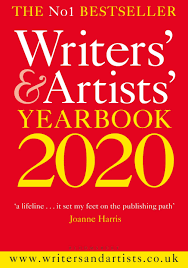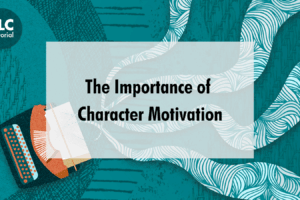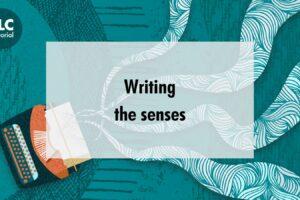One of the things we most regularly get asked at TLC is, ‘What is the difference between a fiction pitch and a non-fiction pitch, when I’m sending my work to an agent or publisher?’
There are increasingly lots of creative ways to get your book into the hands of readers, namely self-publishing, partner publishing, or publishing the work online – and that’s without mentioning magazines or anthologies if you’re writing short stories or poetry.
The traditional route to publication though, submitting to an agent to represent you, or directly to a publisher (also known as an unsolicited submission), is still the most sought-after route for many writers.
There are a few key differences between a fiction and non-fiction pitch to an agent:
A FICTION submission package will generally consist of:
A Covering Letter: This outlines what the project is, who you are, and some context about the work and why you’re pitching to this agent in particular. What inspired you to write the book? Where do you see it sitting on a bookshelf? It’s also a good idea to include some comparative titles – books that have a similar feel or style to yours. Generally, this shouldn’t stretch more than a page of A4, and is your ‘shop-window’ for selling the book. Something that grabs the attention here is crucial, because in a busy office, this is the first thing an agent or publisher will read.
A Synopsis: This is a document that clarifies the story, plot and intention of what you’re writing – it can contain spoilers. It should be a roadmap for what comes ahead, and is often the bare bones of the story itself, but you might want to retain a tone or style throughout the work.

An Opening Extract: This will usually be the opening 3 chapters or 10-15,000 words. Different agents have different requirements and submission guidelines , so make sure you know what it is that the agent is looking for in this department – check their website, or call the admin assistant to check if need be! Again, as with the covering letter, something that grips the reader in your opening is important. You want to give the agent or publisher a reason to keep reading, whether that be a shocking event, unique style, or beautiful writing. Agents looking for fiction submissions will generally want a completed draft to be done by the time you pitch.
This is generally what agents are looking for from fiction submissions. These documents can be tricky to put together (especially the synopsis), and generally in my experience, in the current market, agents tend to be looking for a good mix of an exciting project and a unique voice. But generally your main priority is to be selling the book, and why you’re the best person to write it. This is true of both fiction and non-fiction submissions.
A NON-FICTION pitch or ‘proposal’ will generally consist of:
A Covering Letter: This serves a similar purpose as it does in the fiction proposal – who are you, and why are you the right person for this project – as well as why you’re pitching to them.
Author Biography: The ‘who’ is a bit more important with non-fiction proposals, so some form of short CV or potted bio is useful. This should generally stick to relevant experience, of course – that summer working your local pub might not be relevant here… (Unless you’re writing a guide to Wetherspoons carpets!)
Market Analysis: It can help to do some market research on similar books in the market you’re looking to write into. Who is writing similar things, can you do some Googling and find out sales figures? You don’t need to do anything hugely groundbreaking here, (there are marketing teams for that) but you’re just trying to show an awareness of the market, and that you have a place in it. It’s about showing that you’re aware of what is being published into the market at the moment, and where your book would sit on a bookshelf.
An Overview/Chapter Breakdown: If you can give an idea of the total context/content/shape of the book at this stage, that’s great. The one huge advantage that non-fiction proposals have over fiction ones is that you don’t need to have a completed draft of the manuscript before you start sending it out (an exception to this would be Creative Non-Fiction, which is submitted on a similar basis to fiction). It can be useful for the agent to see what the shape of the book is, and what your general ideas are for it.
Sample Chapters: This is hopefully pretty self-explanatory; a handful of chapters from the book to give them an idea of your competency as a writer. These don’t need to be from the beginning of the book (as they do in a fiction pitch), so you can pick your strongest chapters/writing to give the agent more of a flavour of what you, and the book, are about.
Non-fiction proposals tend to be a bit more hefty, as they contain more sections – but you have the advantage with these of not having to have a completed manuscript – and you’re really pitching ‘the concept’ at this stage, as well as yourself, a bit more. As with the fiction submission, the covering letter is quite important, as is the Overview, so maybe make sure those are really sparkling, if you can. But ideally, every part of it will be strong!
I’d also strongly recommend having a look at the Writers’ & Artists’ Yearbook if you’re looking to send things out via the traditional publishing route.
It’s also worth mentioning that you don’t need to jump with your first offer from a literary agent, if you’re lucky enough to get one. You can always ask to meet with them first (or Zoom), to make sure they’re a good match for you, and to know that they’re interested in your work. A good agent will be as passionate about your project as you are, and their vision for the book should line up with what you feel is the best version of the book, even if it means further editing. And if you ever need help with a contract, don’t forget to check out the Society of Authors.
Going the traditional route is incredibly competitive, so brace yourself for some rejections, and potentially for some long waiting times. A strong pitch will always put you ahead of the crowd, so work on it, have a clear pitching strategy in mind, and stay connected with your writing so it doesn’t just feel like a waiting game, but like part of a process. And, if you do find you need help, you can always contact us.
Good luck!










One Response
Hi Joe,
Thanks for the pitching tips.
I’m looking forward to tonight’s Zoom meeting with Agents – my first group event with TLC.
Best wishes
Frances Rowley Beaumont